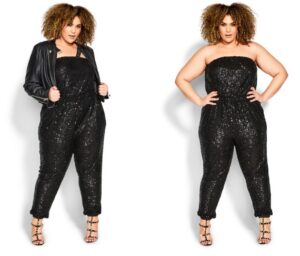To go snowshoeing, wear warm layers, waterproof pants, insulated boots, and a hat and gloves. Snowshoeing is a fun and adventurous winter activity that allows you to explore snowy landscapes.
However, dressing appropriately for this activity is essential to ensure your comfort and safety. When hitting the trails, it’s crucial to wear the right attire. The key is to dress in layers to trap heat and regulate your body temperature.
You should start with a moisture-wicking base layer, followed by an insulating mid-layer, and finish with a waterproof and windproof outer layer. Additionally, wearing waterproof pants and insulated boots will keep your lower body warm and protected from the elements. Don’t forget to wear a hat and gloves to prevent heat loss from your head and hands. By dressing properly, you’ll be able to enjoy your snowshoeing adventure to the fullest.
Dressing In Layers For Maximum Comfort
When heading out for a snowshoeing adventure, it is important to dress in layers for maximum comfort. Layering allows you to adjust your clothing as your body temperature changes throughout the day.
For the base layer, consider options that provide both insulation and moisture-wicking properties, such as merino wool or synthetic materials. These fabrics will keep you warm while also keeping you dry by wicking away sweat.
Next, an insulating mid-layer is crucial for extra warmth. Fleece jackets or synthetic insulated vests are excellent choices. They trap your body heat and provide an extra layer of insulation.
Lastly, an outer shell layer is essential for protection against wind and snow. Look for a waterproof and windproof jacket that is also breathable. This will keep you dry from both precipitation and sweat while allowing excess heat and moisture to escape.
When it comes to choosing the right fabrics for each layer, opt for materials that are durable, lightweight, and offer good mobility. This will ensure that your clothing doesn’t restrict your movement while enjoying the snowshoeing experience.
Essential Gear For Snowshoeing
htmlSnowshoeing is a popular winter activity, and having the right gear is essential for an enjoyable experience. Let’s take a look at some of the important gear you should consider:
Snowshoes: Selecting The Right Type And Size
Snowshoes are the most crucial gear for snowshoeing, as they provide the necessary flotation and traction on the snow. When selecting snowshoes, consider factors like your weight, the type of terrain, and the snow conditions you’ll be encountering.
Gaiters: Keeping Snow Out Of Your Boots
Gaiters are protective coverings that go over your boots and lower legs, preventing snow from entering your footwear. They provide an additional layer of protection and help keep your feet dry and comfortable throughout your snowshoeing adventure.
Snowshoe Poles: Benefits And Importance
Snowshoe poles offer balance, stability, and added support while snowshoeing. They help distribute your weight evenly and reduce the strain on your legs and joints. Additionally, poles assist in maintaining a proper walking rhythm and can be especially useful when traversing steep or uneven terrain.
Waterproof Boots: Ensuring Dry And Warm Feet
Having waterproof boots is crucial when snowshoeing, as they keep your feet dry and warm. Look for boots specifically designed for winter activities, preferably with insulation and a reliable waterproof membrane to ensure your feet stay protected from the cold and wet conditions.
Warm Socks: Materials And Thickness To Choose
Choosing the right socks is essential for maintaining warmth and comfort. Opt for moisture-wicking materials like merino wool or synthetic blends that help keep your feet dry. Consider the thickness of the socks based on the temperature and your personal preference.
Gloves, Hats, And Scarves: Winter Accessories For Added Warmth
In addition to proper footwear, it’s important to protect your extremities from cold temperatures. Wearing insulated gloves, hats, and scarves can keep your hands, head, and neck warm and shielded from the elements, enhancing your overall snowshoeing experience.
Staying Warm From Head To Toe
htmlWhen it’s time to go snowshoeing, it’s essential to dress appropriately to stay warm and comfortable. From head to toe, ensure you have the right gear to brave the cold. Starting with headwear, a warm and insulated hat or a headband provides protection and insulation for your head, keeping you cozy. A good winter jacket is crucial for snowshoeing, as it shields you from wind and cold temperatures. Look for jackets made with water-resistant or waterproof material to keep you dry in snow conditions. For your lower body, choose insulated pants or bibs to keep your legs warm and protected. Opt for pants with zippered vents for temperature regulation. Insulated and waterproof footwear is a must-have for snowshoeing. Look for boots with thick insulation and waterproof membranes to keep your feet warm and dry. When it comes to socks, layering is key. Start with a moisture-wicking liner sock, then add a thicker wool or thermal sock for maximum warmth. Finally, don’t forget to protect your hands with insulated gloves or mittens that offer dexterity and warmth. With the right gear, you can enjoy snowshoeing in comfort and style!
Accessorizing For Style And Functionality
When snowshoeing, it’s important to choose clothing that is both fashionable and functional. Incorporating bright colors or reflective elements can help ensure safety and visibility on the trails. For both men and women, there are stylish outerwear options available that provide warmth and protection from the elements. Additionally, it’s important to find snowshoe-specific accessories such as sunglasses and goggles to protect your eyes from the glare of the snow. A backpack is an essential accessory for carrying extra layers, food, water, and other necessities. Choose a backpack that provides storage and convenience, with compartments and straps to secure your belongings. By considering both style and functionality, you can stay comfortable and look great while snowshoeing.
Maintaining Comfort In Challenging Weather Conditions
Maintaining Comfort in Challenging Weather Conditions
Adjusting layering based on weather forecasts is key to staying comfortable while snowshoeing. When planning your outfit, consider the expected temperatures and precipitation levels. Dress in layers to manage your body temperature effectively. In snowy or wet conditions, it is essential to stay dry. Choose waterproof and breathable outer layers to protect yourself from moisture. To shield against wind chill, wear windproof materials or add a windbreaker on top. During the activity, you may need to remove or add layers on the go. Opt for clothing with easy-to-adjust features like zippered vents and removable hoods. This flexibility allows you to adapt to changing weather conditions without interrupting your adventure. Remember, the key to staying comfortable is to maintain the right balance of warmth and breathability.

Credit: www.bostonglobe.com
Tips For Choosing Snowshoeing Apparel
htmlWhen planning your snowshoeing adventure, it’s crucial to consider the activity level and expected terrain. This will determine the type of apparel you should wear. Additionally, understanding the impact of temperature and wind chill is important to ensure your comfort and safety.
When dressing for snowshoeing, you need to find a balance between staying warm and avoiding overheating during physical exertion. Layering is key, allowing you to adjust your clothing as needed. Start with a moisture-wicking base layer to keep you dry, then add an insulating mid-layer for warmth. Finally, top it off with a waterproof and breathable outer layer to protect you from snow and wind.
It’s also worth considering renting snowshoeing gear before investing in your own. This gives you the opportunity to try different types of snowshoes and apparel to find what works best for you. Renting can also be a more affordable option if you’re just starting out. Once you’ve found the right gear, you’ll be well-equipped for a comfortable and enjoyable snowshoeing experience.
Table: Key Considerations For Snowshoeing Apparel
| Consideration | Details |
|---|---|
| Activity level and expected terrain | Choose apparel suitable for the intensity and demands of your snowshoeing terrain. |
| Temperature and wind chill | Understand how temperature and wind can affect your comfort and adjust your clothing accordingly. |
| Duration of snowshoeing | Dress in layers to manage your body temperature as you progress through varying intensities and durations of snowshoeing. |
| Flexibility and mobility | Choose apparel that allows for adequate movement and flexibility during physical exertion. |
| Options for gear rental | Consider renting snowshoes and apparel before purchasing to find the most suitable options for your needs. |
Frequently Asked Questions Of What To Wear Snowshoeing
What Should I Wear When Snowshoeing?
When snowshoeing, it’s important to layer your clothing for warmth and comfort. Start with a moisture-wicking base layer, add an insulating layer, and finish with a waterproof and breathable outer layer. Don’t forget warm socks, insulated boots, and accessories like gloves, hats, and sunglasses.
Are There Any Special Shoes For Snowshoeing?
While you don’t need special shoes for snowshoeing, it’s recommended to wear waterproof and insulated boots to keep your feet warm and dry. These boots should have good traction to prevent slipping on icy surfaces. Make sure your boots have enough room for thick socks and allow for comfortable movement.
What Kind Of Pants Are Best For Snowshoeing?
When snowshoeing, it’s best to wear waterproof and breathable pants that provide freedom of movement. Look for pants with adjustable waistbands and reinforced knees for durability. You can choose between insulated pants for added warmth or layering base and outer pants for more versatility.
How Should I Dress For Snowshoeing In Different Temperatures?
In colder temperatures, layering is key. For temperatures below freezing, wear a heavier insulating layer and consider adding a windproof shell. In milder temperatures, a lighter insulating layer with a breathable shell should be sufficient. Adjust your layers based on your activity level and personal comfort preferences.
Conclusion
Snowshoeing is an exhilarating outdoor activity that requires appropriate clothing to ensure comfort and safety. By following these tips on what to wear, you can fully enjoy your snowshoeing experience. Remember to layer your clothing, choose moisture-wicking fabrics, wear insulated and waterproof footwear, and don’t forget to protect your extremities.
Dressing appropriately will keep you warm, dry, and ready to conquer the snowy trails. Enjoy the beauty of nature while staying comfortable, and embrace the wonders of snowshoeing. Happy exploring!





